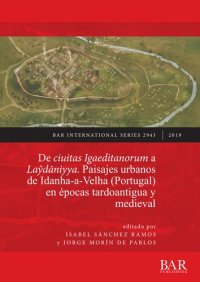
Ebook: De ciuitas Igaeditanorum a Laŷdāniyya. Paisajes urbanos de Idanha-a-Velha (Portugal) en épocas tardoantigua y medieval: Urban landscapes of Idanha-a-Velha (Portugal) in Late Antiquity and the medieval period
- Series: BAR British Archaeological Reports International Series 2943
- Year: 2019
- Publisher: BAR Publishing
- Language: Spanish
- pdf
Este libro presenta los resultados alcanzados por el Proyecto de Investigación IdaVe sobre el paisaje, el urbanismo y la arquitectura de Idanha-a-Velha en épocas romana, Antigüedad tardía y medieval-islámica a partir de los estudios realizados en el marco de este proyecto y de la reinterpretación de las excavaciones que nos han precedido. Desde 2012, un equipo interdisciplinar ha afrontado la investigación de la ciudad y el territorio de la ciuitas Igaeditanorum (Portugal), que pertenecía a la provincia romana de Lusitania, situada en la parte occidental de la Península Ibérica. El objetivo ha sido comprender la transformación de la topografía y el paisaje romanos en sede episcopal tardoantigua a través de un enfoque arqueológico amplio. Las nuevas excavaciones nos han permitido realizar análisis de zoología, carpología, palinología y morteros, cuyos resultados se recogen en este volumen. La aplicación de diversos métodos de teledetección en los trabajos de campo nos ha permitido registrar más datos sobre la arquitectura y la topografía de la ciudad antigua. This book presents the results obtained by the IdaVe Research Project on the landscape, urbanism and architecture of Idanha-a-Velha in the Roman, late antique and medieval periods from the latest fieldwork data and the reinterpretation of previous works. Since 2012, an interdisciplinary team has been studying the city and territory of the Roman ciuitas Igaeditanorum (Portugal), that was located in the Roman province of Lusitania in the western Iberian peninsula. The aim has been to understand the transformation of the Roman city and landscape into a late antique bishopric through a wider archaeological approach. The new excavations have allowed analysis of zoology, carpology, palynology and mortars. The application of remote sensing methods in fieldwork have enabled the authors to record more data about the architecture and topography of the ancient city.